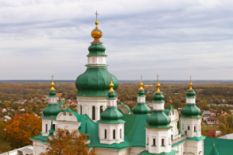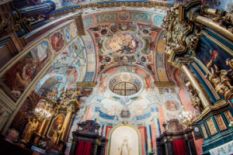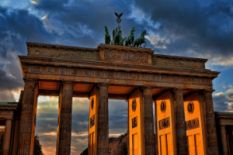Cave Monastery, Rozhirche
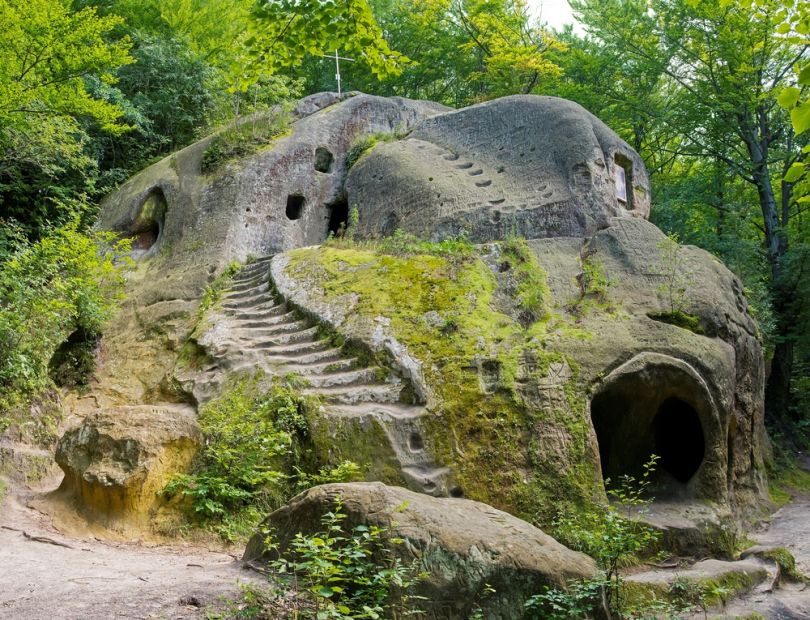 One of the most unusual monasteries in Ukraine is located in Rozhirche village near Lviv. The unique feature of this sacred place is its construction site - a cave by Stryi River. According to various historical estimates, the cave monastery in Rozhirche was built during the 13-14th centuries. The vast complex, which consists of several monasteries, is located in artificial caves.
One of the most unusual monasteries in Ukraine is located in Rozhirche village near Lviv. The unique feature of this sacred place is its construction site - a cave by Stryi River. According to various historical estimates, the cave monastery in Rozhirche was built during the 13-14th centuries. The vast complex, which consists of several monasteries, is located in artificial caves.
The oldest monastery is dated back to the 13th century, and the walls of the caves are decorated with the 17th-century frescoes. The monasteries are carved in the rocks and are located on two levels. The first level has two rooms, and the second, reachable by the rock stairs, has only one. There are different theories as to the purpose of the rooms. The common version states that the lower and large cave is the living room with an adjoined monastic cell, and the upper cave is a monastery church.
Archeological exploration allows theorizing that the ‘living room’ was expanded during the construction so that in the end it could host about twenty people. Visitors are often astonished by the frescoes and carved faces that can be found on the site. It's better to visit this location with a local guide who can lead the way through the village paths.
The Ukrainian Jerusalem, Zarvanytsia
 The Ukrainian Jerusalem, which is a part of the Mariinskyi spiritual center in Zarvanytsia village, was sanctified on August 27. In mere days after the event, this location is already flooded with pilgrims that walked miles to see the new temple. The reason behind is that the new complex has actual life-sized copies of the main places of worship of Jerusalem.
The Ukrainian Jerusalem, which is a part of the Mariinskyi spiritual center in Zarvanytsia village, was sanctified on August 27. In mere days after the event, this location is already flooded with pilgrims that walked miles to see the new temple. The reason behind is that the new complex has actual life-sized copies of the main places of worship of Jerusalem.
The architects managed to recreate Calvary, where Jesus Christ was crucified, the Holy Stairs on which he stepped on his way to trial, the Pool of Bethesda, which is claimed to heal the sick, the Lions' Gate and the Tower of David. Besides, an olive garden where Jesus Christ prayed before the arrest, is present in Zarvanytsia as well. The central part of the sacred location is the copy of the Holy Sepulchre. The Ukrainian twin will now have an original piece from Jerusalem thanks to the Custos of the Holy Land Francesco Patton, who brought the stone over to Ukraine.
The church of the Descent of the Holy Spirit, Rohatyn
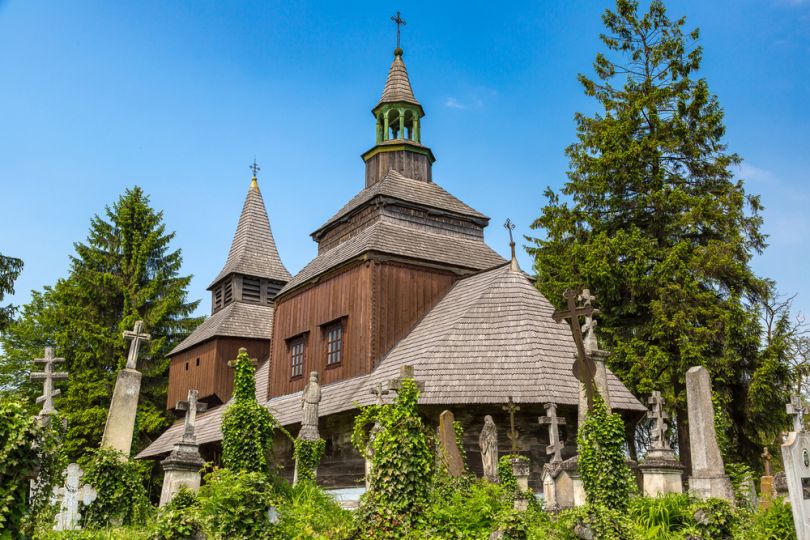 This church with strict lines and towers is unique in numerous ways - firstly, it belongs to the UNESCO World Heritage list as a landmark 'bearing exceptional testimony to a distinct ecclesiastical building tradition' and 'representing an important historical stage of architectural design in the Carpathian Region'. Besides, this place of worship is quite unique even on the UNESCO list - it's the oldest existing wooden church in Ukraine.
This church with strict lines and towers is unique in numerous ways - firstly, it belongs to the UNESCO World Heritage list as a landmark 'bearing exceptional testimony to a distinct ecclesiastical building tradition' and 'representing an important historical stage of architectural design in the Carpathian Region'. Besides, this place of worship is quite unique even on the UNESCO list - it's the oldest existing wooden church in Ukraine.
The first written mentioning of the church dates back to 1481 in a State Archive of Lviv, however, officially the church is dated 1598 - the year carved on one of the church walls. The church was a place of worship for one of the first Orthodox Brotherhoods in Ukraine, Rohatyn Brotherhood. They were the ones who ordered a luxurious Baroque iconostasis - completed in 1650, it belongs to the three oldest iconostases in Ukraine.
The church of the Descent of the Holy Spirit was lucky to survive numerous regimes and two World Wars with minor renovations. Nowadays it functions as a museum and hosts an exhibition of traditional Galician icons, sculptures and carving.
The church of the Holy Trinity, Zhovkva
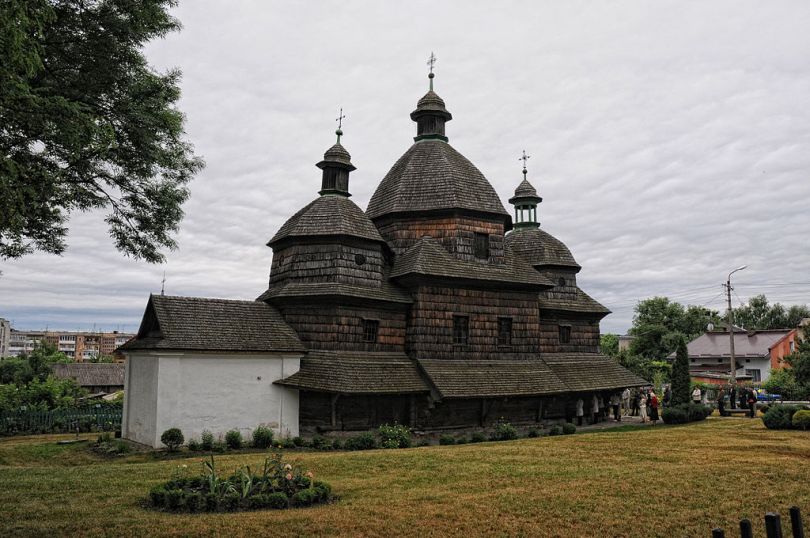 The church of the Holy Trinity in Zhovkva in the West of Ukraine is another the UNESCO-listed religious landmark. It was first erected at the beginning of the 17th century in 1601 but the great Lviv fire of 1719 burned the wooden construction to the ground. The new church was built in 1720 in the Renaissance style.
The church of the Holy Trinity in Zhovkva in the West of Ukraine is another the UNESCO-listed religious landmark. It was first erected at the beginning of the 17th century in 1601 but the great Lviv fire of 1719 burned the wooden construction to the ground. The new church was built in 1720 in the Renaissance style.
The Holy Trinity in Zhovkva is famous for its iconostasis - it features about 50 works made by the famous icon painter Ivan Rutkovych at the beginning of the 18th century. The church was closed during the early Soviet era, then opened as a museum, renovated in the 1970s and nowadays it belongs to the Ukrainian Greek Catholic Church.
Karaite Kenesa, Kyiv
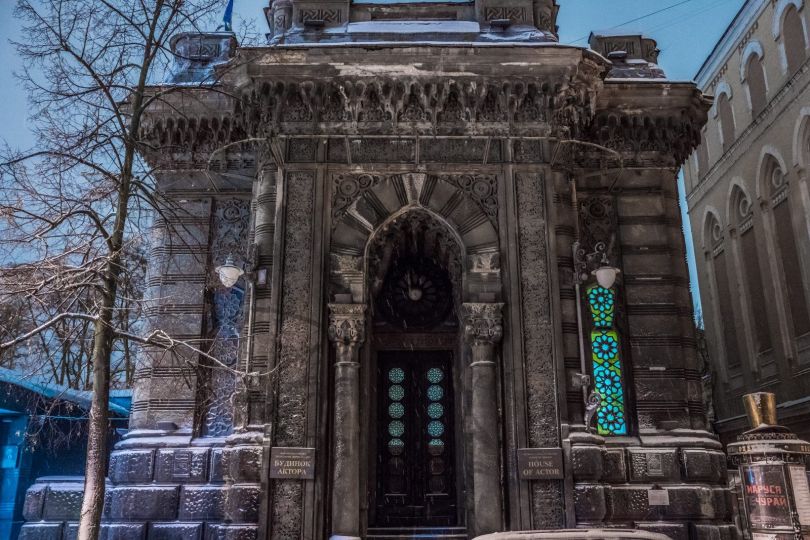 One of the unique buildings located in downtown Kyiv on Yaroslaviv Val street was, in fact, built as a church. Kenesa is a religious temple of Crimean Karaites - an ethnic Turkish-speaking group of Karaite Jews, spread in Crimea, Israel, Poland, Lithuania and Russia. That's why Kyiv Kenesa is sometimes called a 'forgotten synagogue'.
One of the unique buildings located in downtown Kyiv on Yaroslaviv Val street was, in fact, built as a church. Kenesa is a religious temple of Crimean Karaites - an ethnic Turkish-speaking group of Karaite Jews, spread in Crimea, Israel, Poland, Lithuania and Russia. That's why Kyiv Kenesa is sometimes called a 'forgotten synagogue'.
The luxurious Moorish Revival-style building was projected by the famous Polish-Ukrainian architect Władysław Horodecki. Italian sculptor Emilio Sala decorated the temple with cement stucco, sponsored by Solomon and Moses Kogen, the tobacco magnates of the early 20th century. Originally, the building had a dome, which was presumably lost during the WWII. Nowadays, Karaite Kenesa functions as a House of Actor and hosts numerous plays, concerts and other theatrical performances.
German Evangelical Lutheran Church of St. Catherine, Kyiv
German Evangelical Lutheran Church of St. Catherine is less popular compared to Kyiv Pechersk Lavra, yet it is just as unique. The history of the Lutheran church dates back to the late 18th century when Catherine II invited German colonists to settle on the lands of the Russian Empire. The colonists appeared in Kyiv as well - Germans settled on Podil.
It's interesting that another prominent landmark in Kyiv, Pharmacy Museum, was also established by the same colonizers, at the time as the first city pharmacy. The pharmacy hosted church services but soon the community decided to build a separate church - a wooden Saint Catherine Kirche appeared on Spaska street. The initial church was unfortunately lost during the Podil Fire of 1811, so the new temple was built during 1855-1857. It was projected by the Russian architect Johann Waldemar Strom, famous for St Volodymyr's Church in Kyiv.
Nowadays the church functions with its initial purpose and also hosts concerts of classical music to give visitors a chance to marvel at the interior to the renowned melodies.
Rock monastery, Liadova
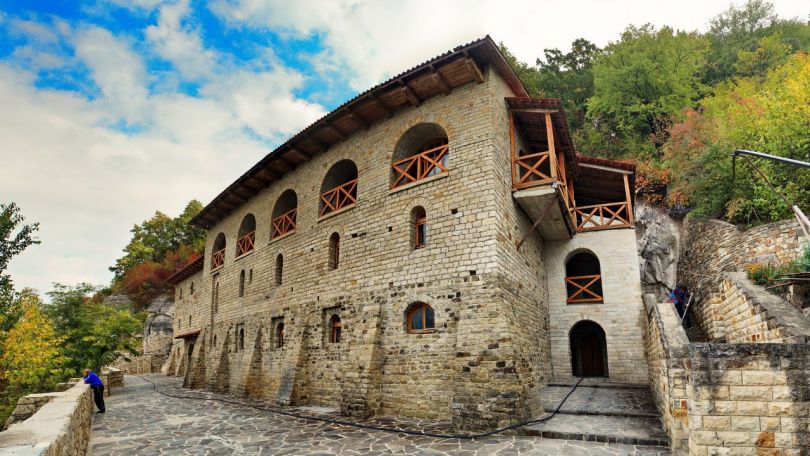 One of the most ancient and yet under-explored monasteries is located in Liadova village in Vinnytsia region. The peculiarity of this particular sanctuary is its location on a rocky terrace, 90 meters above sea level. The monastery provides a magnificent view of Dnister River and surrounding green slopes.
One of the most ancient and yet under-explored monasteries is located in Liadova village in Vinnytsia region. The peculiarity of this particular sanctuary is its location on a rocky terrace, 90 meters above sea level. The monastery provides a magnificent view of Dnister River and surrounding green slopes.
It is believed that the monastery was founded in 1013 by Saint Anthony of Kyiv, who carved a cell in the mountain's rock. The cell still exists nowadays; it remained intact throughout the centuries. The first written mentioning is dated 1159. While the monastery isn't especially vast, the cells are indeed ancient-looking. Besides, one of the cells hosts an ossuary that lures in curious souls.
Church of the Intercession, Sutkivtsi
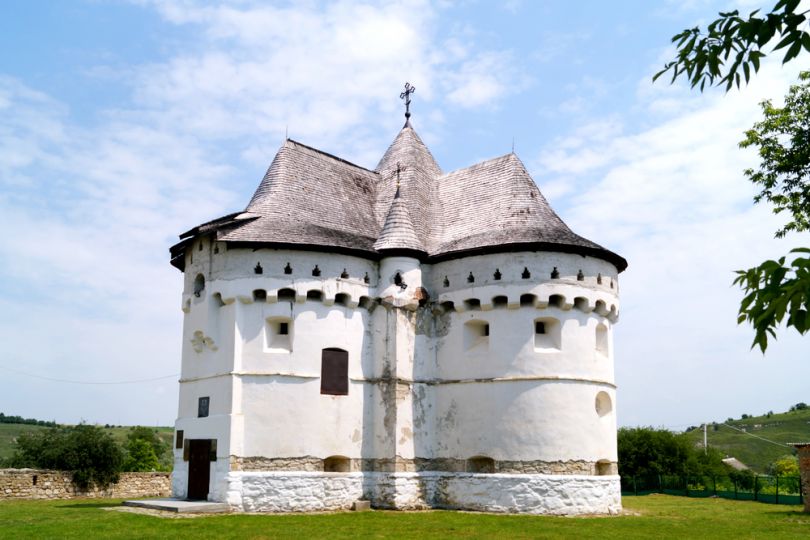 The village is famous for a unique fortification construction — tetraconch defense church, the one and the only in Ukraine. Built in 1462, Sutkivtsi Church of the Intercession is one of the oldest defense churches in the country, still functioning till this day as a museum.
The village is famous for a unique fortification construction — tetraconch defense church, the one and the only in Ukraine. Built in 1462, Sutkivtsi Church of the Intercession is one of the oldest defense churches in the country, still functioning till this day as a museum.
The church was closed twice during the anti-religious campaigns of the Soviet Union, and unique frescos, painted on the walls, were ruined during the unprofessional repairs in the 1990s. Luckily, due to the efforts of Ukrainian restorers, Sutkivtsi Church has gained its primal view, and visitors can enjoy the old frescos, as well as the 19th-century oil paintings.
Sources: photo-lviv.in.ua, pysana.com, news.ugcc.ua, castles.com.ua, primetour.ua, flatday.com.ua.
Photo sources: depositphotos.com, news.ugcc.ua, Eli Bakutis / Pinterest.com, motolife.mk.ua. All images belong to their rightful authors.
